Focus is a German bicycle company that produces sport models for road and mountain use. The company was started in 1992 by mike Kluge and has since been acquired by the Pon Group, which also owns Kalkhoff and Faraday. Their products tend to use high quality drive systems and have been slowly making their way into premium dealers across the United States. I reviewed the Jarifa 29 at the New Wheel in Marin (north of San Francisco) just after filming the Jarifa Donna 27, a hardtail cross country model with 27.5″ tires vs. larger 29″ here. As a a 5’9″ tall guy, I prefer the Jarifa 29 because it comes in larger frame sizes and has a dark aesthetic vs. the white with pastels on the Donna… I view these two models as a sort of his and hers setup based on the colors and naming convention. The 29er wheelset elevates this bike, creates a lower attack angle which smooths out cracks and bumps, provides increased cushion because of the higher air volume, and is priced the same as the Donna. Apparently, even some women prefer the look of the Jarifa 29 to the all-white Donna, and that might be because the black shifter cable housings, hydraulic brake lines, and electrical wires are all black, along with the motor casing and battery box. They really blend together nicely and the bike even has black spokes and pedals, but fluorescent yellow accents are present on the frame, fork and wheelset. Aesthetically, the Jarifa 29 looks good for a 2017 model, but it isn’t as refined as some Haibike and Bulls models which are also use the Bosch CX motor but tip it up into the frame and bring the battery lower and deeper into the downtube for a cleaner look. What you get here is a value priced cross country style electric bike with upgraded hydraulic disc brakes, a spring fork with 100 mm travel and remote lockout, a 9-speed Shimano Deore drivetrain, and the high torque Bosch CX motor. For me, it’s a big deal to see any electric bike model in four frame sizes like this, and you get an excellent two-year comprehensive warranty along with shop support for fitting and repairs.
Driving the Jarifa 29 is a high performance mid-motor from Bosch that’s rated from 250 or 350 watts up to 500+ watts depending on location (I think it’s the same hardware but a bit of marketing has gone into the US rating to help position it on-par with the higher legal power limits). In any case, this is the most powerful motor that Bosch produces for electric bikes right now and it delivers up to 75 Newton meters of torque for zippy starts and impressive climbing ability. Because this is a centerdrive motor, you can leverage the rear cassette gears for climbing or hitting and maintaining the 20 mph top assisted speed. It’s like a manual transmission car, but simpler to shift, and it helps you get better range because the motor isn’t struggling at high or low speeds, as long as you shift thoughtfully. Compared to a hub motor, this thing positions weight low and center on the bike frame, which improves handling, and it allows for standard quick release wheels and a cleaner rear-end with fewer wires running across the bike. Most mid-drive e-bikes are well received by traditional bike stores because the motor stays out of the way, making the wheels easier to work with (this applies to fixing your own flats or issues on the trail as well, both wheels offer quick release). What Bosch motors provide that most of their competitors lack, is a highly responsive multi-sensor that listens for rear wheel speed, pedal cadence, and pedal torque 1,000+ times per second. The control system measures and recognizes your pedal strokes and can differentiate the forces of shifting and thus, ease back to reduce drivetrain wear (this is called shift detection). There’s even a shift recommendation readout on the display panel that points up or down to encourage you to shift and maximize motor efficiency. The Bosch CX is capable of supporting up to 120 RPM pedal speeds while most other motors fade out close to 120 or quit around 100. However, there is a bit more noise produced and some pedal friction due to the smaller 18 tooth sprocket (which is a 45 tooth equivalent). This small sprocket provides increased chain grab and might empower the motor through mechanical efficiencies but has to turn 2.5x for every crank arm revolution, which requires a reduction gearbox. If you’re pedaling this bike unpowered, the chainring still has to spin faster and some of your pedal stroke power is spent on that conversion… but it’s not a lot and the standard 170 mm crank arms provide plenty of mechanical advantage to do so in my experience. Perhaps the most relevant trade-off here is that the smaller chainring sprocket which allows the chain to get very close to the right chainstay, which can cause increased contact and chipping… and I didn’t see a slap guard on the bike (which the Donna did have). So consider using a strip of clear masking tape if you want to keep the frame looking good. Note the alloy chainring guard, which keeps the chain from dropping and helps to clear pant legs.
Powering this bike is a more basic Powerpack 400 from Bosch. It looks nice, has an integrated look for lifting and carrying safely, and can be charged on or off the bike frame… but contains ~25% less energy than the new Powerpack 500. Thankfully, it still uses high-quality Lithium-ion cells that should age well, and the mounting interface is forward compatible so you could eventually upgrade to the Powerpack 500 with no issue. This lower-specced pack might be a cost and weight savings choice, though the bike isn’t especially lightweight at ~50 lbs, especially for a hardtail. The charger that comes with the Jarifa 29 is also a bit specced down, providing a 2 Amp flow vs. 4 Amps which would charge more quickly. Just like the motor, this battery is mounted low and center on the frame, but it isn’t sunk in or flattened like some other models. Imagine adding a rear rack to this bike, supported by the threaded eyelets on the chain stays, and using it to commute through the city and across packed trails during the week. You could easily park the bike at a rack (making sure to secure both wheels and the saddle since they are attached with quick release systems) and then carry the battery and display up to your desk and charge. On the weekends, you could remove the rack to reduce weight and rattling, and take the bike out onto trails. It’s a versatile ebike, and one that is easier to lift and hang on some racks because of the high-step frame design. However, do be careful with the brake and shifter lines that run along the base of the top tube, some of the other power cables have been internally routed, but the rear end cables have note.
Operating this bike is a breeze once the battery has been charged and mounted properly to the downtube. Just press the power button on the lower left corner of the Bosch Intuvia display panel and watch as it blinks to life quickly. As mentioned earlier, this display is removable so you could store it out of the weather and sun, and keep it from getting scratched up at bike racks. It’s actually one of my favorite display panels because it is large and easy to read, has an integrated Micro-USB port for charging portable electronics, can be angled to reduce glare, and is still easy to interact with using the button pad that sits near the left grip. The buttons on this pad click easily and are positioned in such a way that you can memorize where they are, and interact with them while focusing on the trail. The center button is rounded and has an i painted on it. This cycles through trip stats and readouts on the display panel while the + and – buttons above and below allow you to increase or decrease motor power and speed. Compared to the more compact Bosch Purion display panel that is used on the Jarifa 27 Donna, this display is just easier to interact with and the mounting slide where the LCD actually sits can be repurposed with the COBI phone mount to use your smartphone as the display and run GPS, play music, and track performance all while keeping it charged. In short, this display is quite good… and you can enter into the settings and change units or get diagnostics by holding the reset and i buttons on the face of the display. You can also ask a Bosch Certified dealer to install lights that can run off of the main battery pack and be turned on and off by pressing the light key on the lower right side of the display. The display itself is always backlit with a faint blue glow.
The Focus Jarifa 29 is a great product because it uses excellent components, even though it’s not as refined in terms of aesthetics or using the top of the line drivetrain or battery pack. It’s a good value in my opinion, an ebike that will hold up well and can be used in a wide range of environments… the remote lockout fork is particularly interesting because it allows you to ride from packed terrain onto bumpy off-road trails and release the suspension immediately without bending down. The 29″ wheels are reinforced with eyelets to add strength and will roll efficiently, track nicely, and produce some added comfort through their knobby tires and higher air volume. The Shimano hydraulic disc brakes use large 180 mm rotors that are ideal for handling the larger 29″ wheels and come with easy-pull adjustable reach levers that should fit small and large hands alike. One other neat feature that you get with this and other Bosch powered e-bikes is the range estimation readout, this is handy if you’re concerned about making it home before completely discharging the battery. Considering the smaller capacity battery, this range menu (found by pressing the i button on the display or control pad) can help you determine when to arrow down to a lower level of assist. And, one really cool feature that is only present on the CX motor right now, is the eMTB drive mode (which replaces sport level) that allows for a full range of power output based more on pedal torque than a set power level. This is a mountain bike after all, so having access to eMTB mode (even if you need your dealer to make a software update to get it) could be very satisfying on those trail days. I mention the software update potential because this was a 2017 model which may or may not have eMTB enabled since this is the year it was released. I did test walk mode and that seemed to work great, it’s useful for those sections of trail where you want to play it safe and get off, or for managing the bike in a public area where cycling is not permitted, perhaps also if you had a rear rack mounted and loaded up with gear. Big thanks to Focus for partnering with me on this post and to the New Wheel for letting me test out a couple of similar bikes and dig down into the differentiating details of both. Your comments and feedback are always welcome below in the comments or the Focus forums here.
Pros:
- The Bosch Performance Line CX motor is a premium part that most of the shops and end-users that I speak with have few problems with, it offers up to 75 Newton meters of torque which is excellent for climbing and moving larger 29″ wheels here
- The 9-speed Shimano Deore drivetrain is great for zero to 20+ mph activity and keeps the weight and cost down while holding up better than lower-spec components, this is a Class 1 ebike with 20 mph max assisted speed
- Bosch does now sell a Powerpack 500, which offers ~25% higher capacity, but it increases weight by 0.4 lbs and costs more, I feel like the Jarifa 29 hits a sweet spot with price by using the older Powerpack 400 and I appreciate that the mounting interface is the same so you could always upgrade later if you wanted
- I love that Focus was able to squeeze in bottle cage bosses, even if they are a bit tight on the smaller frame sizes, you could repurpose these for a folding lock or mini pump etc.
- Great adjustable kickstand that stays out of the way of your left crank arm, I like the large platform pedals that come included, and appreciate the alloy chainring guide that will reduce drops and keep your pant leg clear (if you wear pants when riding a mountain bike…)
- The motor controller listens for pedal speed, pedal torque, and rear wheel speed 1,000+ times per second! It’s incredibly smooth and responsive and even has shift detection so the chain, sprockets, and derailleur won’t mash as much when you change gears
- I like the paint job on this bike because it’s dark overall (including the spokes), which helps the black battery box, motor casing, and cables blend in, but it has bright neon yellow accents to keep you visible in low lighting conditions if you’re riding around town or to a trail
- The seat stays have threaded eyelets for mounting a rear rack, this would be a great accessory for commuting or bikepacking vs. a beam rack which wouldn’t be as stable or sturdy, just make sure to get a disc brake compatible rack like this
- Nicer wheelset used here, wider 23 mm rims with reinforcement eyelets that improve strength to handle rugged trails and longer rides without splitting or wearing spokes, I was impressed with the 180 kilogram weight limit here (which is ~285 lbs) considering most e-bikes seem to limit at 250 or 275
- The larger wheels create a lower attack angle that can span cracks and reduce vibration because of the higher air volume, the suspension fork and ergonomic grips are nice but this is a more active frame with a longer stem, consider mounting the stem in the up angle position above the risers and getting a suspension 27.2 mm seat post if you have a sensitive back and neck, just keep in mind that it will raise the minimum saddle height by a few inches
- The Bosch Intuvia display panel has an integrated Micro USB port which can be used to charge a mobile phone or other portable electronics and the mounting interface for this screen can actually be used with the COBI smartphone dock so you could use your phone to control the bike and run GPS etc. (Bosch purchased COBI in 2017)
- High-step diamond frames like this tend to be stiffer, stronger, and lighter than mid-step or step-thru but and they can be mounted to hang-style racks easier, but there are some cables running along the bottom of this top tube so be careful with them
- Many mid-drive motors seem to fade out around 100 RPM or soften towards 120 but the Bosch Performance Line hold strong at these higher cadence levels and that’s nice for people who like to spin, or if you just want the extra support without having to shift gears, it can take you up to 20 mph in several gears, not just the highest one
- The Bosch CX motor can run eMTB mode now (you might need a firmware update from your local shop considering that this model is a 2017), but it allows you to have a full range of power output (120% to 275%) without clicking up and down on the button pad, eMTB replaces Sport level assist which is just below Turbo
Cons:
- The bike looks pretty good and is clearly purpose-built with a proprietary bottom bracket motor interface and integrated cabling, but the battery isn’t sunk into the downtube and the motor isn’t tipped up like some of the newer products from Haibike and Bulls, it just looks a little bulkier and might have a slightly lower ground clearance
- It would have been nice to see a clear plastic slap guard on the right chainstay, the smaller proprietary Bosch chainring positions the chain very close and you’ll end up with some grease marks and possibly chips if riding off-road a lot (consider using a piece of clear masking tape on your own to protect this section)
- Each different type of drive system out there has some compromises to consider and this particular mid-drive uses a reduction gear and smaller chainring that spins 2.5 x for each single crank arm revolution, so there is some pedal friction… though very minor, it does coast efficiently so there’s no drag once you stop pedaling
- I believe this electric bicycle comes with the cheaper, slower, Bosch Travel Charger which delivers a more standard 2 Amp output vs. the nicer 4 Amp charger that comes with more expensive ebikes
Resources:
- Official Site: https://www.focus-bikes.com/de_en/24359-jarifa-29.html
- More Pictures: https://photos.app.goo.gl/yaX333hyRttJv6T32

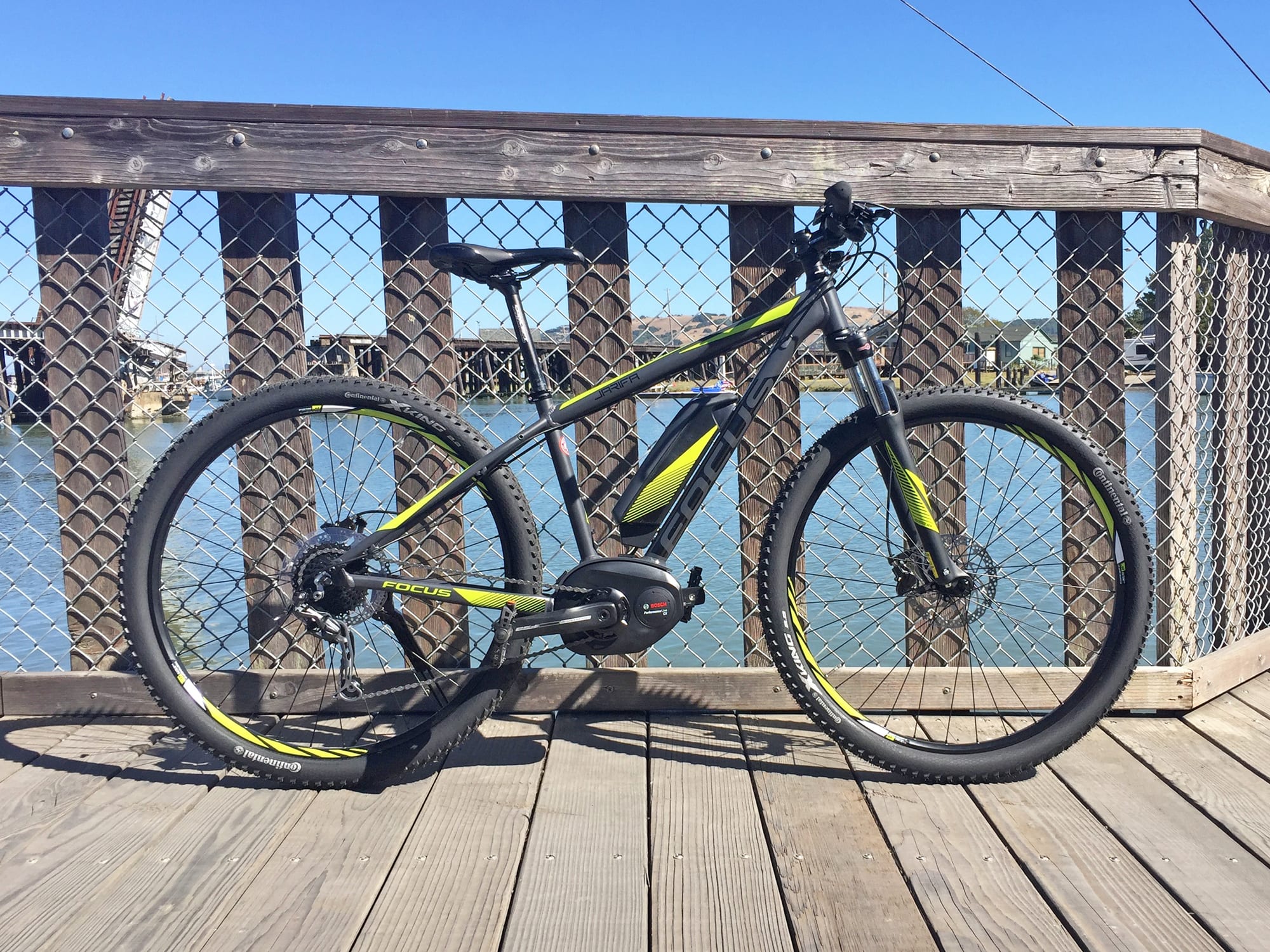
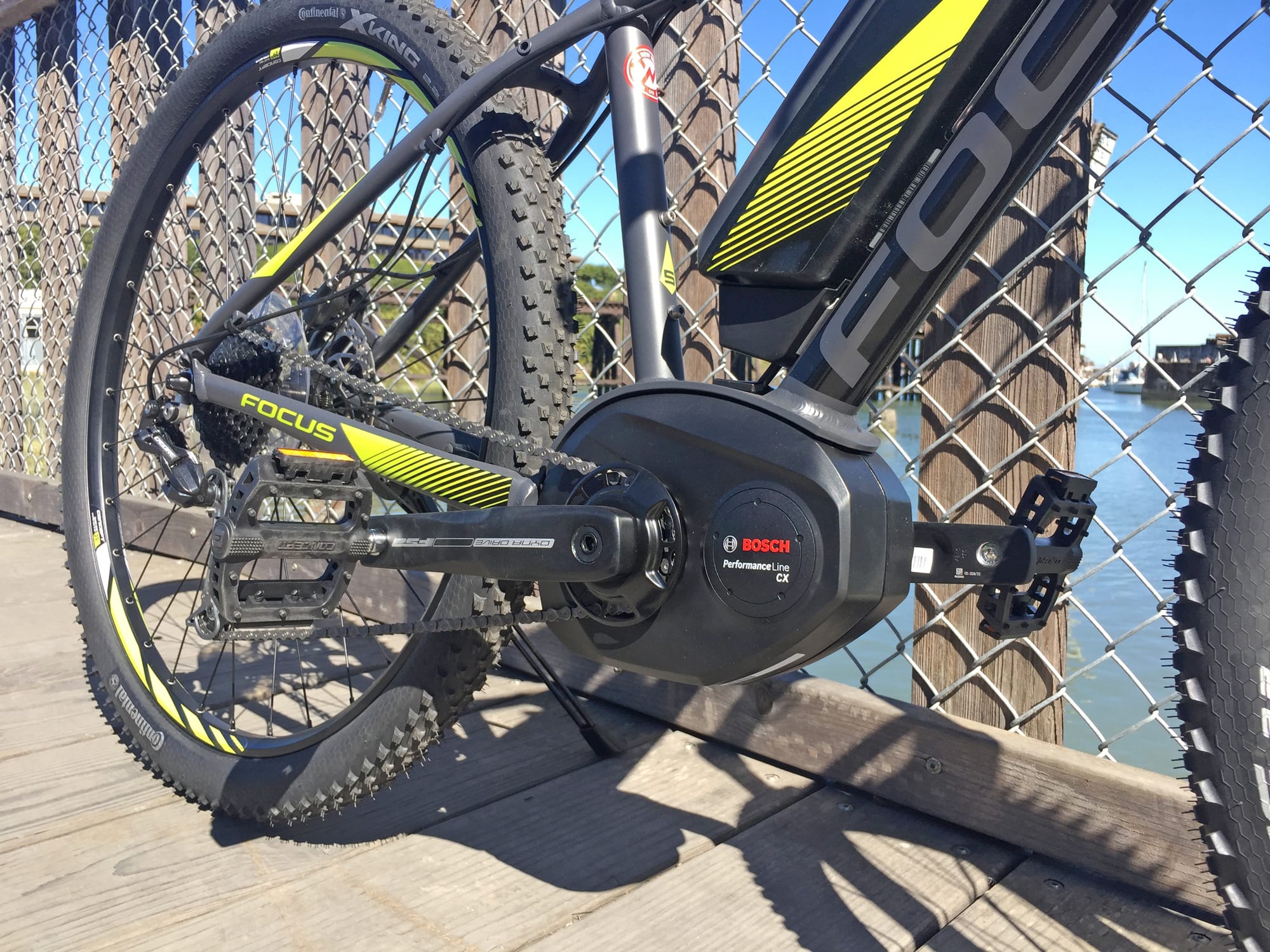
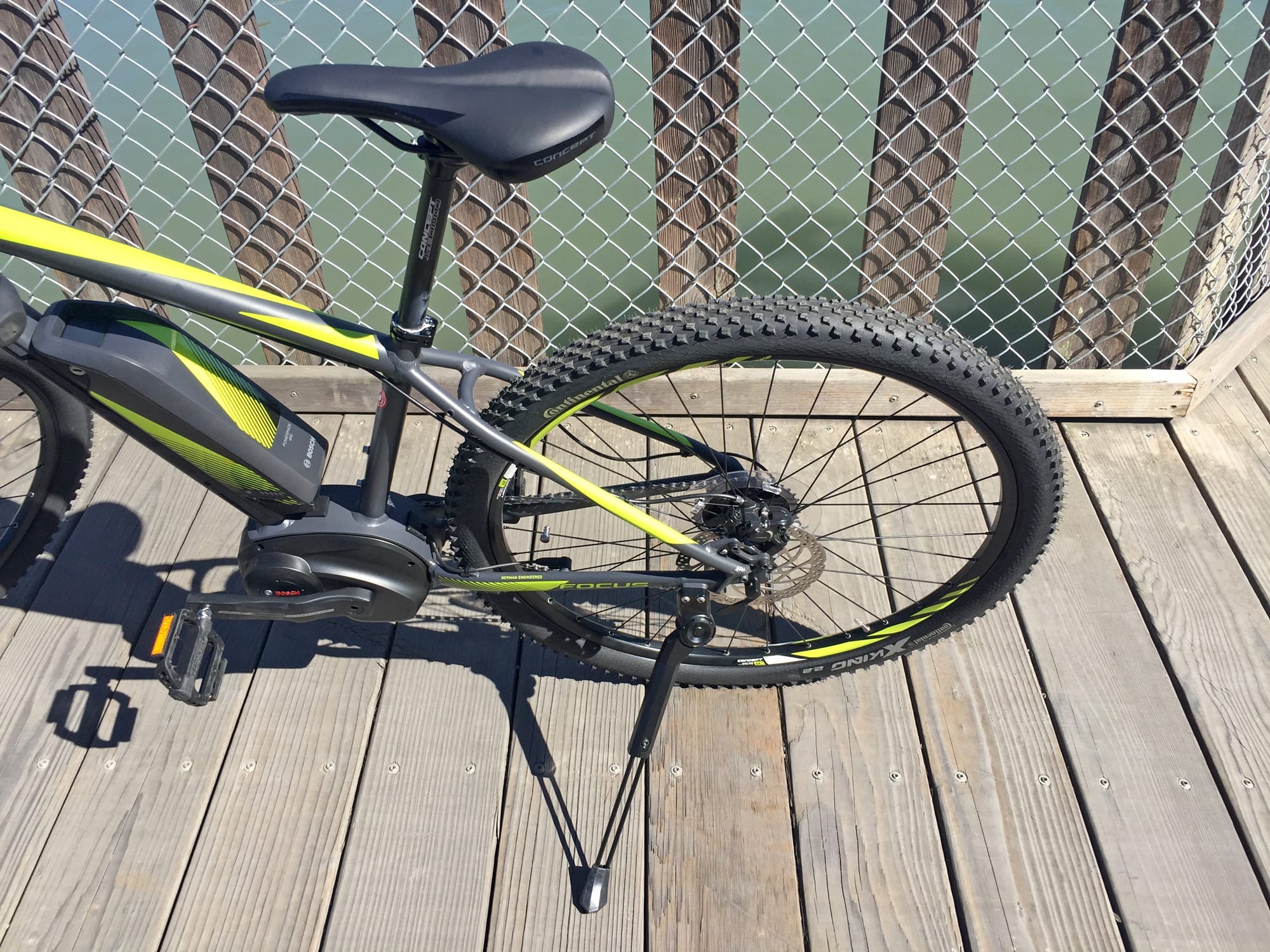
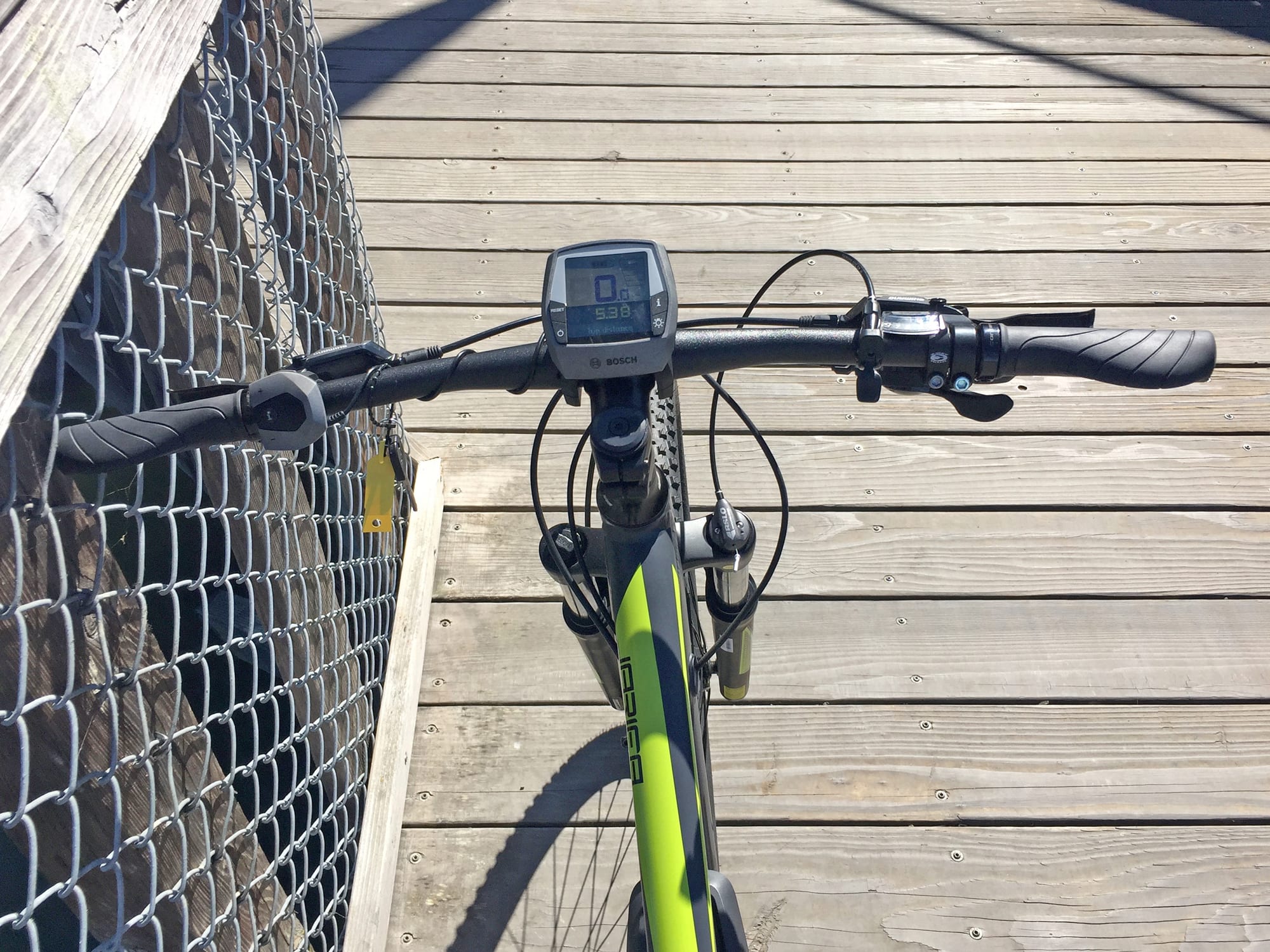
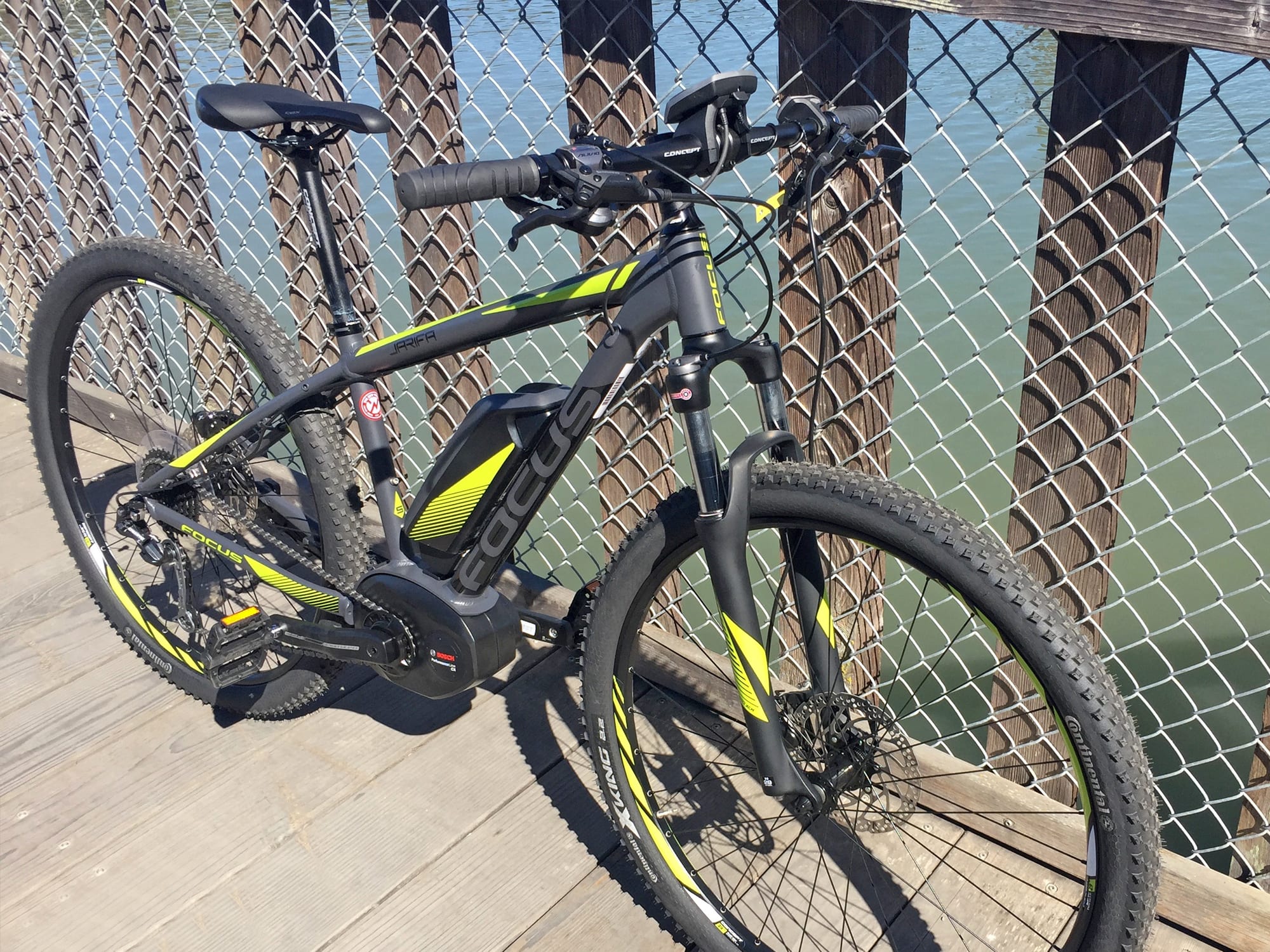
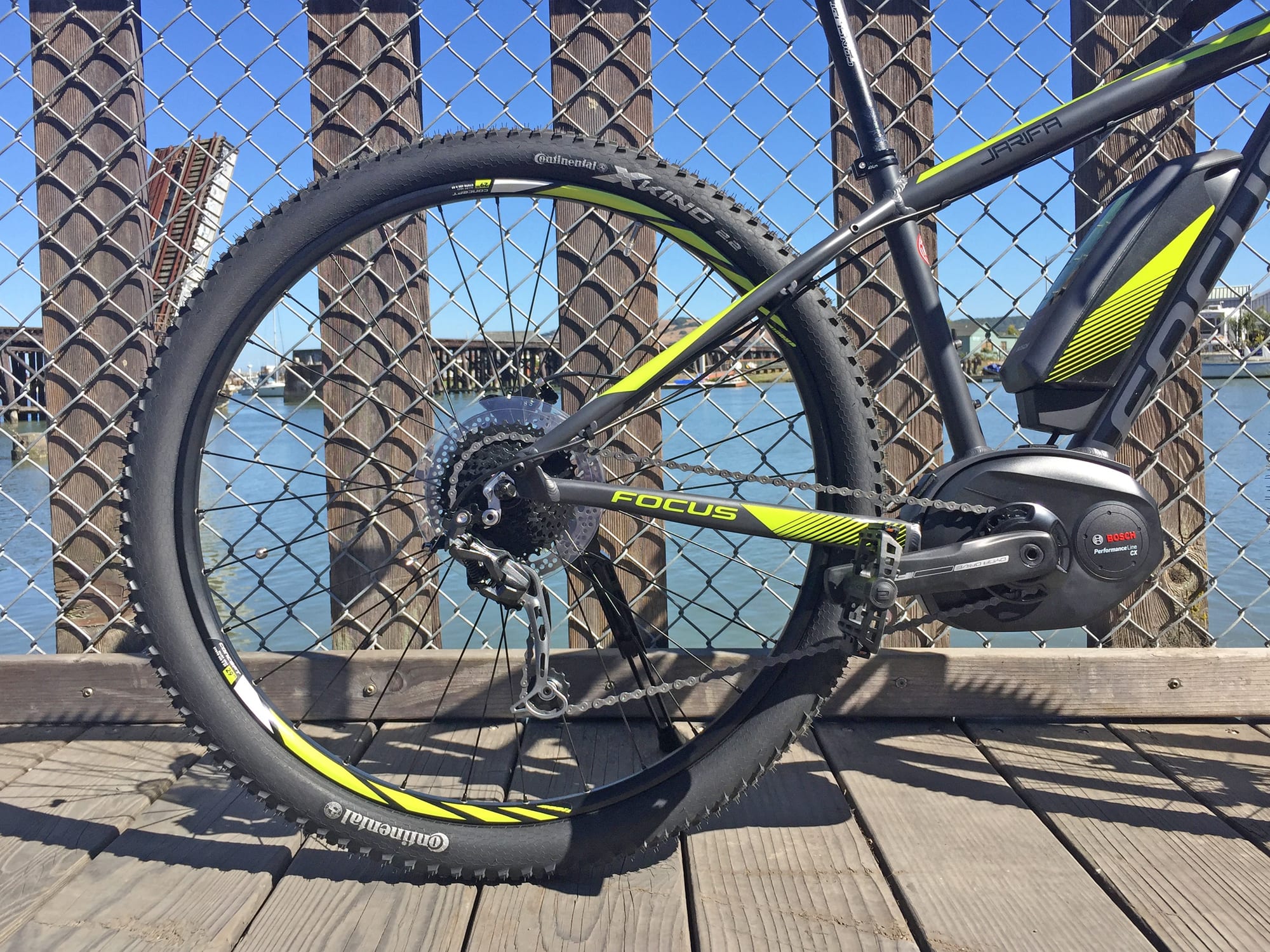
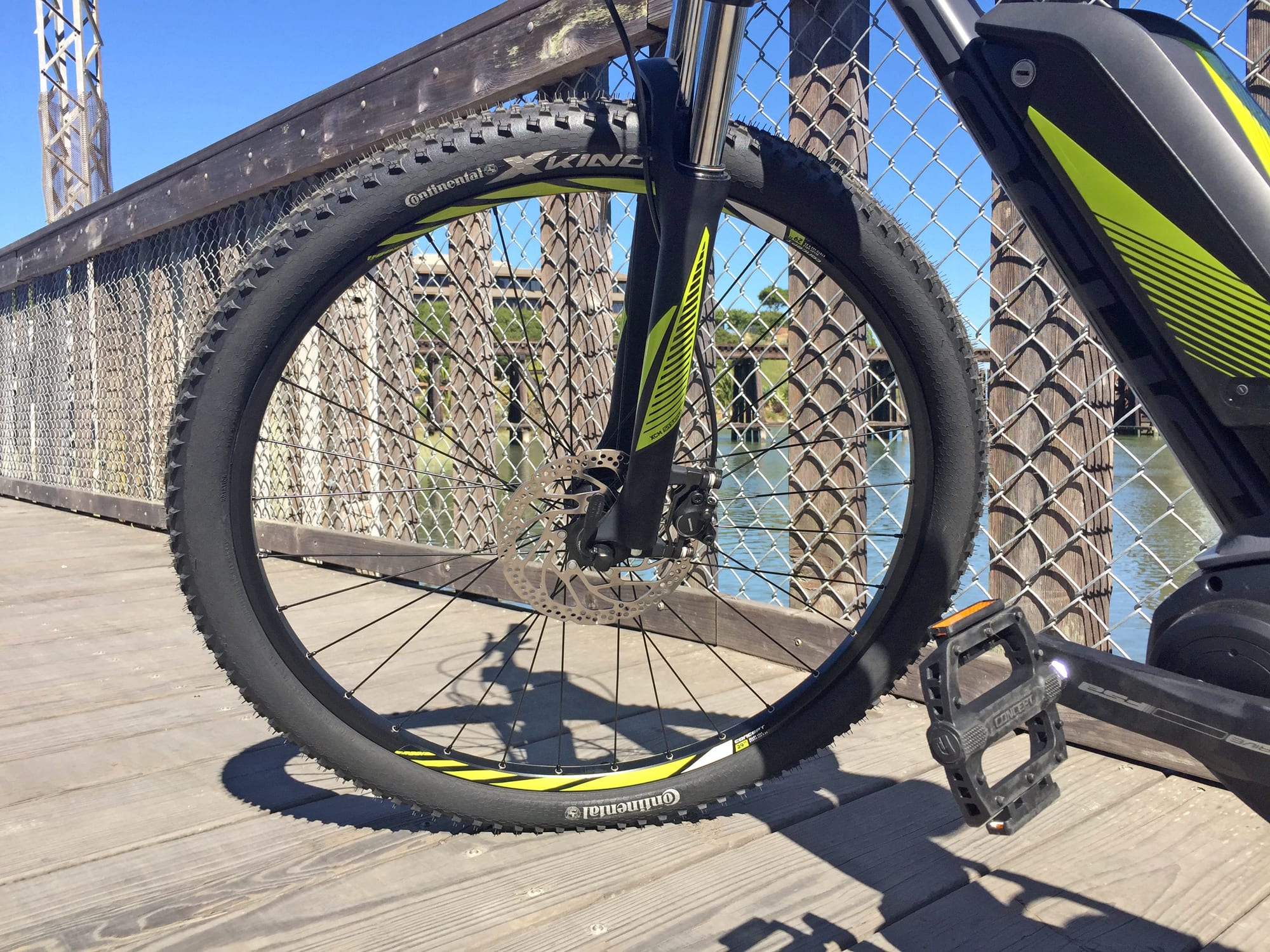


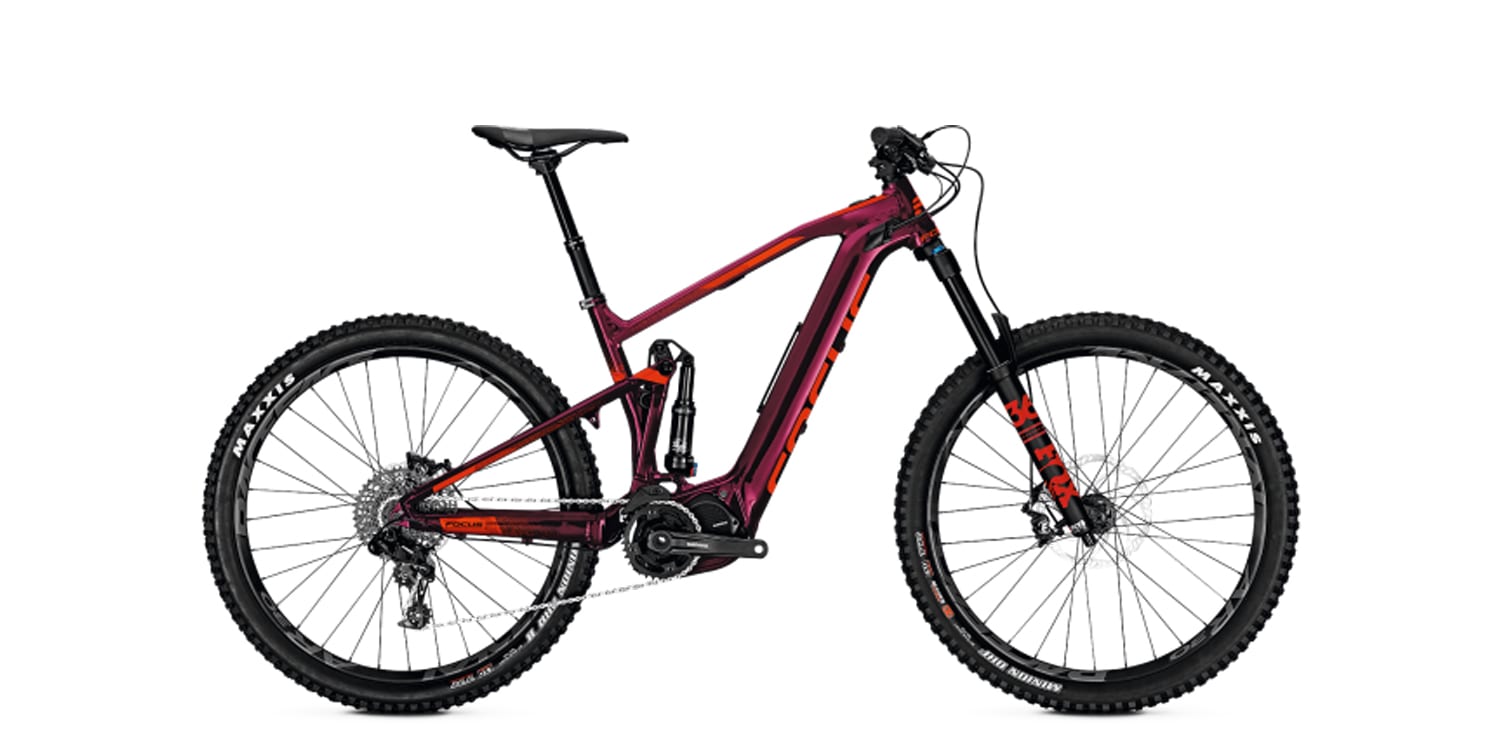
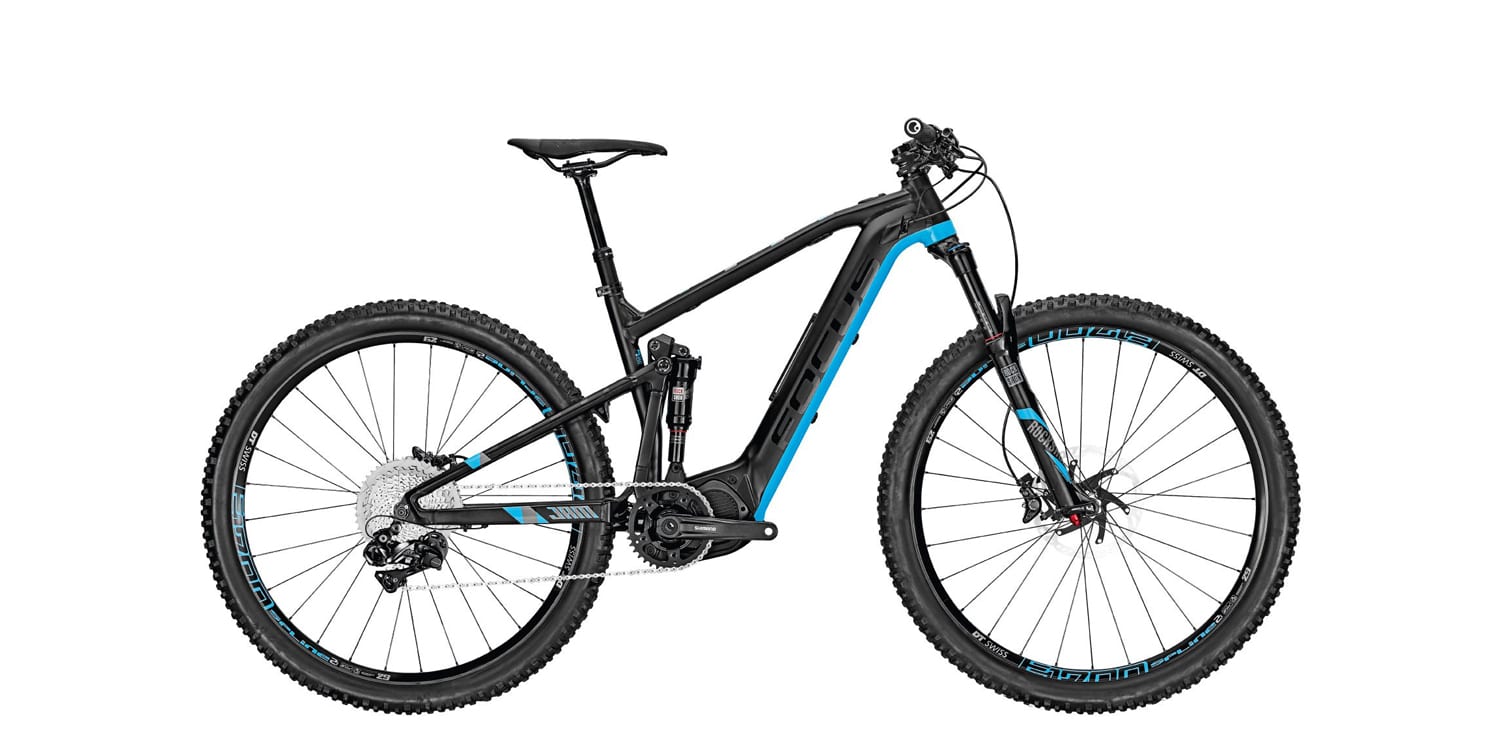
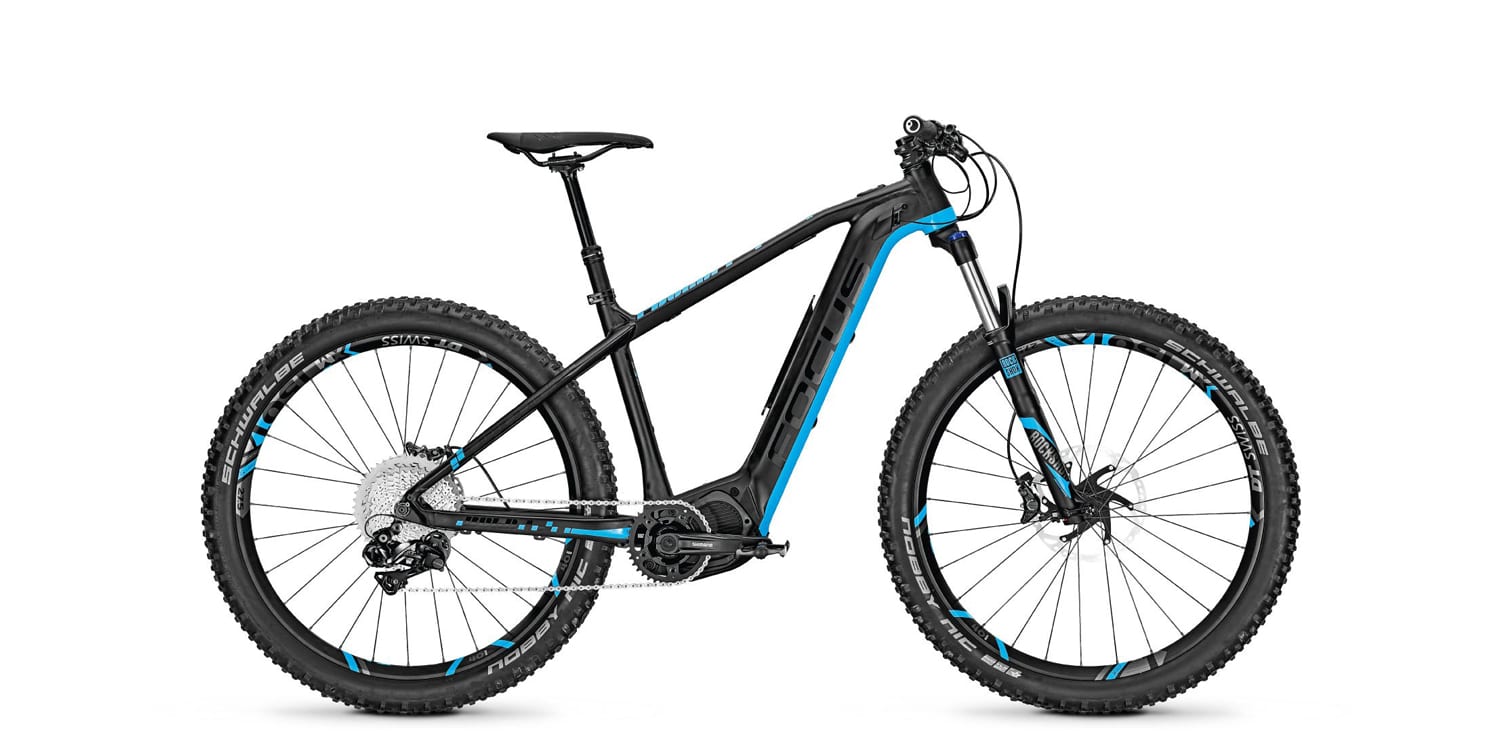
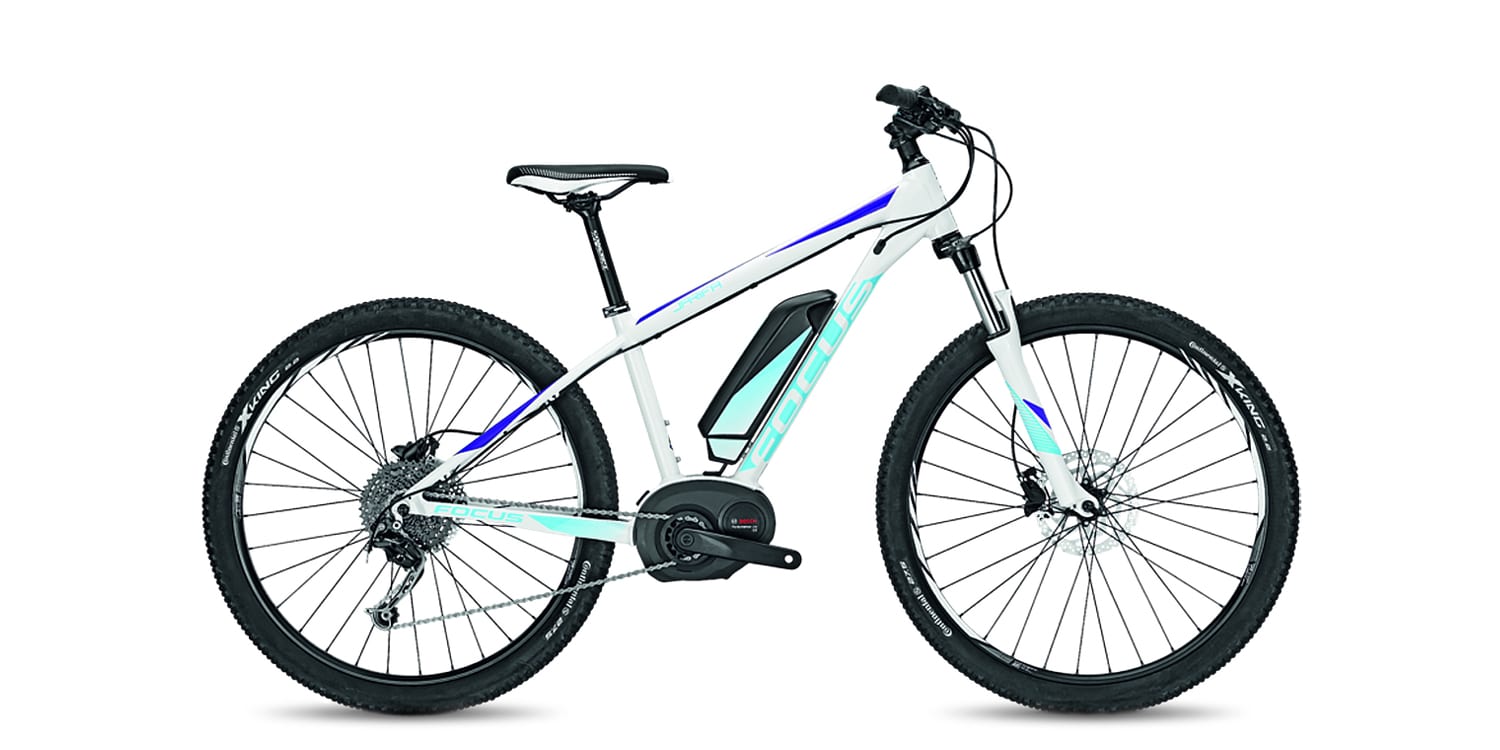

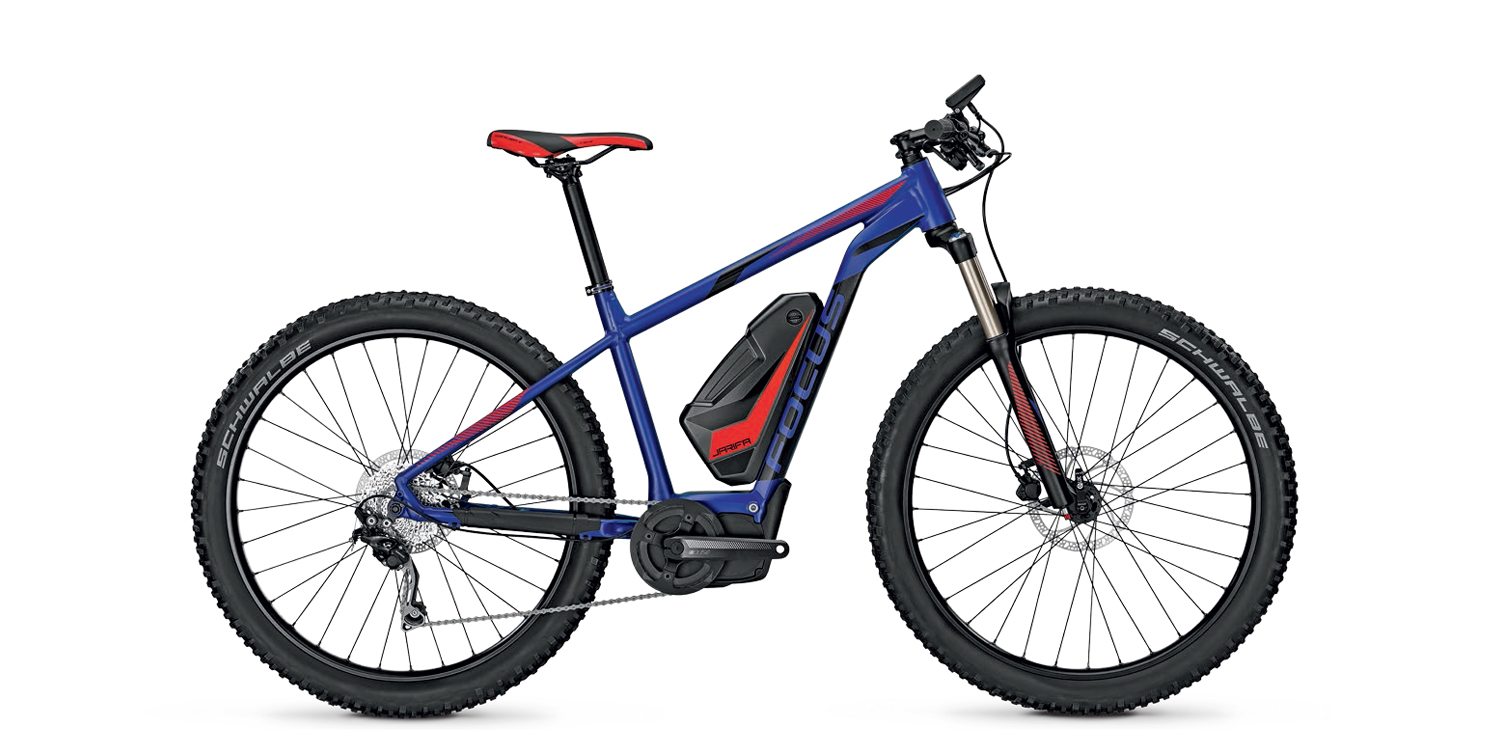
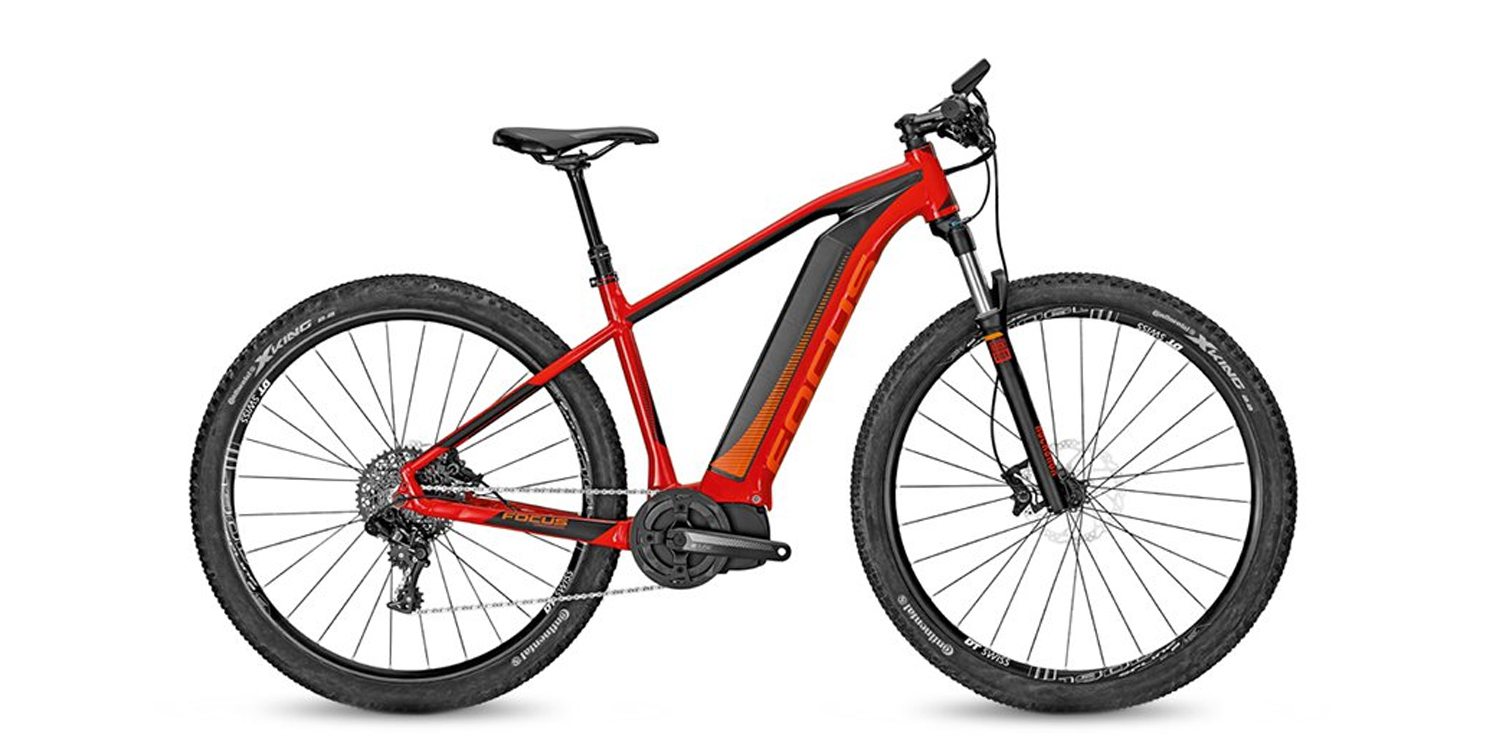
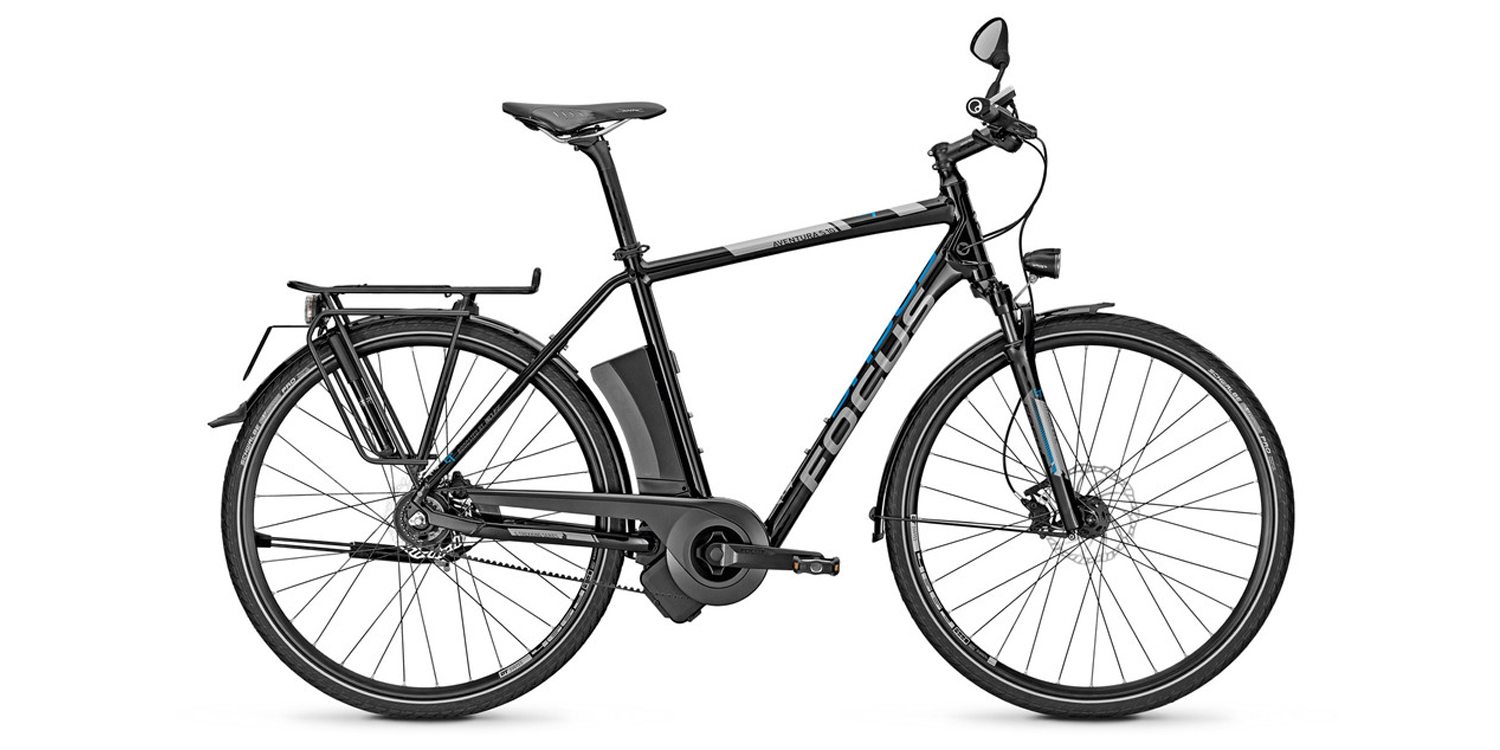
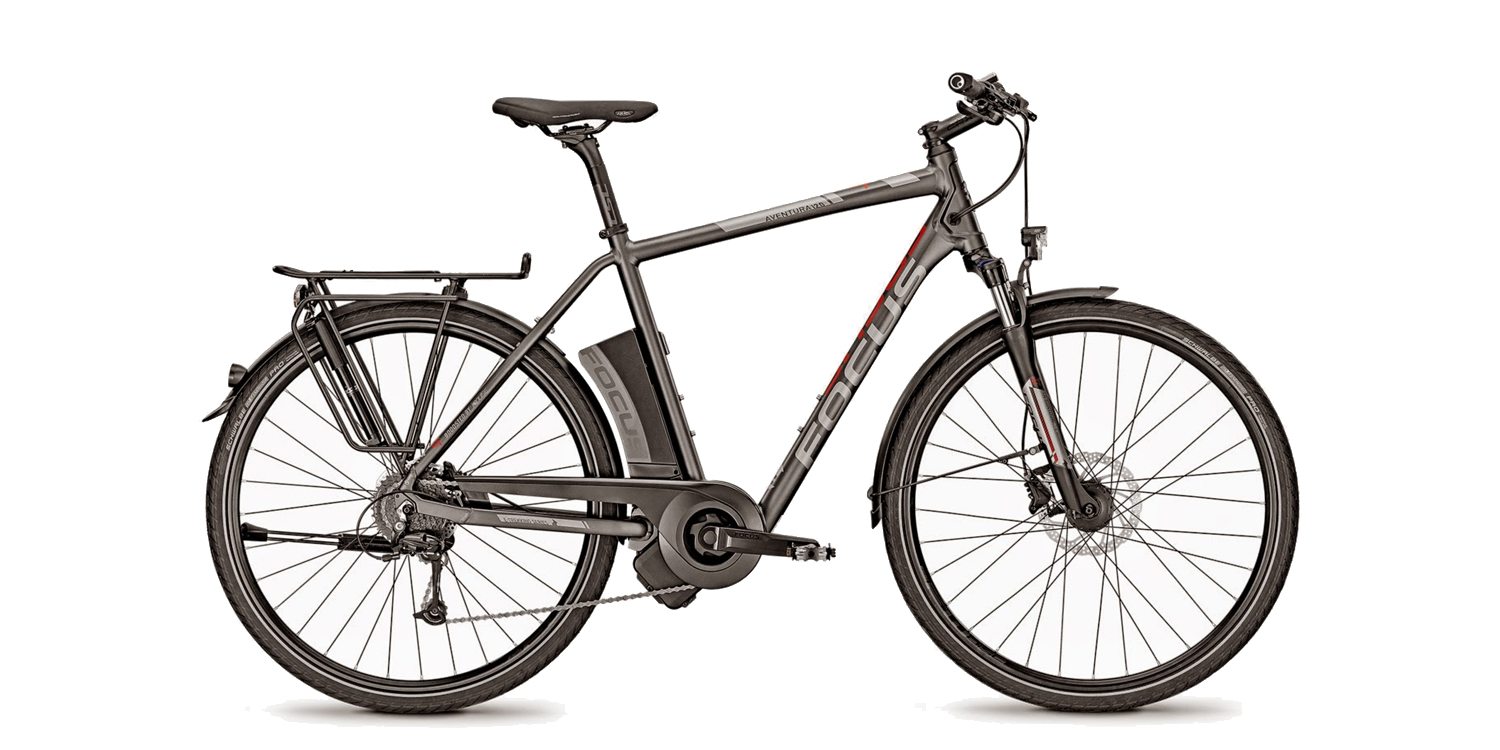
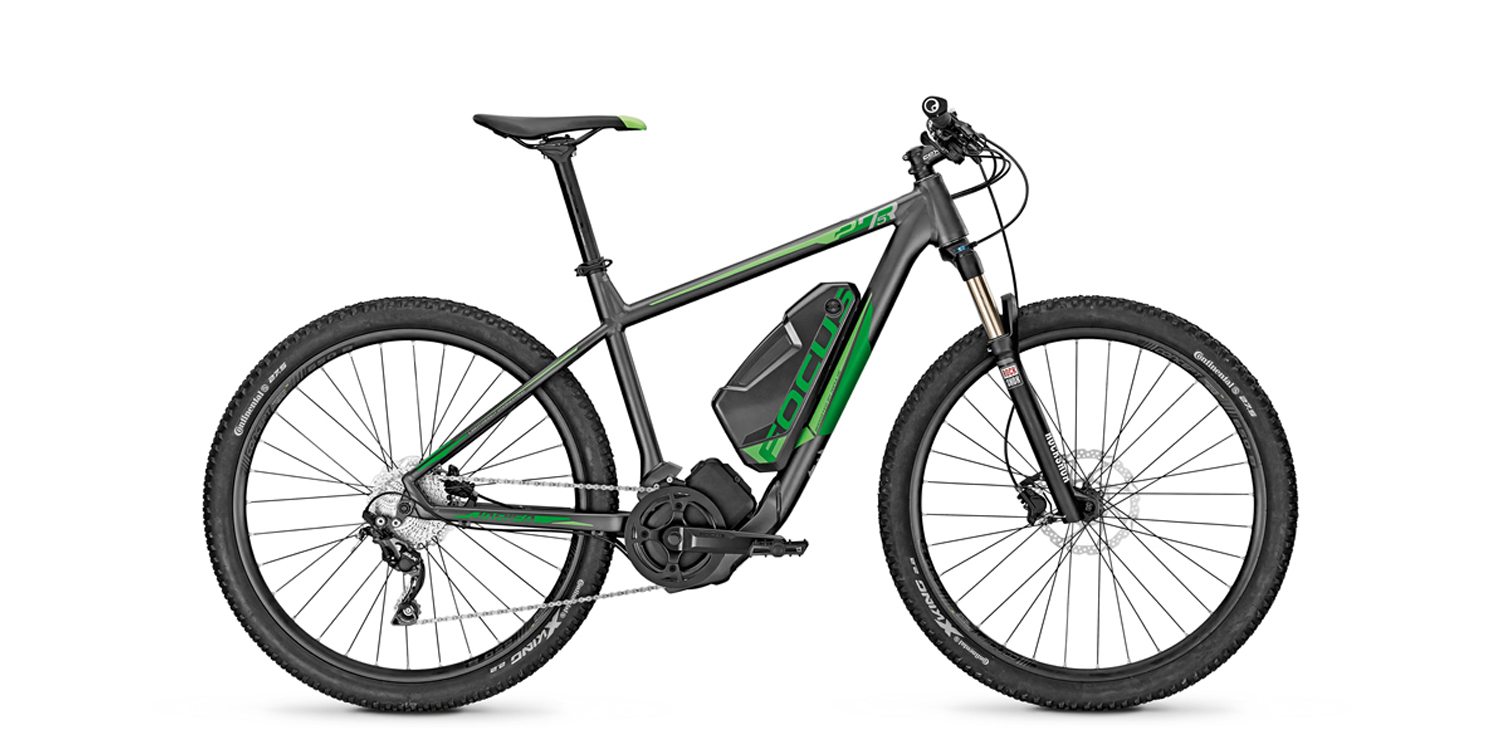
Steve Dilon says
You mentioned in the video that the Shimano 8000 steps motor would probably stall when trying to start at the bottom of a hill. Have you been able to confirm this?
I am trying to decide between the Turbo Levo FSR (Brosse motor) and a Devinci DC XT (Shimano motor). A motor that can climb well is very important for me, because I can use only one leg for pedaling.
So is the Shimano 8000 steps motor really inferior for climbing? Thanks!
Court Rye says
Hi Steve! The Brose motors offer up to 90 Nm of torque and seem to accelerate more instantly than the “click” I was talking about with the new Shimano E8000. If you’re in a lower gear and using a high level of assist, it shouldn’t be a huge issue. I still think this is a very capable motor but have had an even more zippy experience with Bosch (it’s less fluid than Brose) and Yamaha advertises their Zero Cadence starts… but these are all very similar. My favorites are the Brose S motor and Bosch CX. I’m glad you’re getting out there riding and I hope the reviews helped you. Feel free to call me if you’d like to discuss further, my phone number is on the contact page here :)
Steve Dilon says
Hey, thanks so much for your response! Your reviews are indeed most helpful!!
I think I will go with the Turbo Levo! The Brose motor seems more of a known factor. Other than hearing thoughts, I haven’t seen in any of the reviews how the Shimano motor does on hills (maybe because it really is not as good as the other motors?). And other video and written reviews agree with you that the Brose motor is smoother – which is important for me.
Steve
Court Rye says
Cool! Glad I could help Steve, I’d love to hear your thoughts once you get the Levo and have a chance to ride and really experience it. You could share back here or in the forums to help others who might be on the fence :)